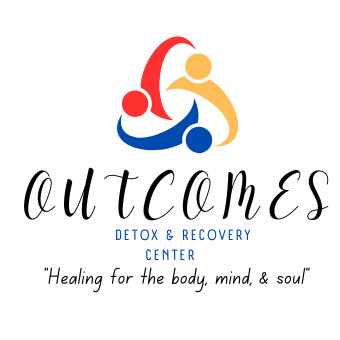It's time to change your life

Can drug addiction and dependence be treated?
Addiction is a disease that, while sometimes incurable, can be treated or managed to eliminate or reduce the disruptive effects on an addict’s life
At Outcomes Detox & Recovery Center we handle in a professional and comprehensive way the treatment of the following addictions.
Since alcohol abuse has so many dimensions and alters so many aspects of a person’s life, treatment is not easy. Effective treatment programs often incorporate many components, each directed to a particular aspect of the disease and its consequences. The treatment of alcoholism should help the patient to stop using alcohol, to maintain a lifestyle free of it and to achieve normal functioning in the family, work and society. Since addiction is typically a chronic illness, people simply can not stop consuming for a few days and heal. Most patients need long-term care of treatment to achieve the true goal of continued abstinence and normalized life recovery.
Medications help suppress withdrawal symptoms during detoxification. However, medical-assisted detoxification is not a treatment in itself, but is just the first step in the treatment process. Patients who undergo a detoxification process with medical assistance but do not receive behavioral treatment show patterns of drug abuse similar to those that were never treated.
Behavioral therapy helps patients engage with the treatment process, modify their attitudes and behaviors related to alcohol abuse, and increase their ability to lead a healthier life. These treatments can also improve the effectiveness of medications and help people stay on treatment for longer. The treatment of alcohol abuse and addiction can be done on an outpatient or in-patient basis during the detoxification period.
The in-patient or outpatient behavioral treatment program includes individual and / or group counseling for alcohol abuse. Cognitive-behavioral therapy helps patients recognize, avoid, and cope with situations in which they are more likely to abuse alcohol.
Marijuana is usually smoked in the form of a cigarette (called “porro”, “canuto” or “churro” in Spanish or “joint” in English) or a pipe. They also smoke in “blunts”, which are cigars or cigars that are snuffed out and stuffed with marijuana. Since the blunt maintains the tobacco leaf used to wrap the cigar, this method of administration combines the active principles of marijuana with those of nicotine and other harmful chemicals. Also, marijuana can be mixed with food or ingested as an infusion. Its most concentrated and resinous form is called hashish and when it is in the form of sticky black liquid it is known as hashish oil. Marijuana smoke has a characteristic pungent odor, which is usually bittersweet.
Treatment
Behavioral interventions, including cognitive-behavioral therapy and motivational incentives (for example, when urine analysis shows that a patient has not used drugs, are given treatments that have been shown to be effective in marijuana dependence) A voucher or voucher that can be exchanged for goods or services). Although there are currently no specific drugs to treat marijuana addiction, recent findings on how the cannabinoid system works show promise for the development of drugs that help alleviate symptoms of withdrawal, block the effects of acute intoxication ( Like euphoria) of marijuana and prevent relapses. The latest treatment data indicates that marijuana was the most frequently abused drug in 2006, accounting for about 16 percent of all admissions to treatment centers. Admissions for marijuana were composed mainly of males (73.8 percent), white people (51.5 percent), and young people (36.1 percent were between 15 and 19 years of age). Those in treatment for primary marijuana use began to consume it at an early age; 56.2 percent had consumed it before the age of 14 and 92.5 percent before the age of 18.
Prescription drugs such as analgesics, central nervous system depressants (tranquilizers and sedatives) and stimulants are very useful therapeutic tools for treating a variety of medical problems. Painkillers allow many people with chronic pain to lead a productive life, tranquilizers can decrease anxiety and help patients with sleep disorders, and stimulants help people with Attention Deficit Hyperactivity Disorder (ADHD) to Focus your attention. Most people who take prescription drugs do so responsibly. However, abuse, ie the use of a drug by a person other than the patient for whom it was prescribed or the use in doses or non-prescribed ways, can produce serious adverse health effects, including addiction.
Examples of Psychopharmaceuticals
- Opioids: Pain relievers that relieve pain.
- Depressants: tranquilizers and sedatives.
- Stimulants
- Dextromethorphan (DXM): Active against colds and coughs.
The most synthesized drugs are manufactured in clandestine laboratories with common elements and often extremely toxic to humans. At present they are within reach of any person, especially the young ones because its cost is relatively cheap by its poor quality.
Some examples are ecstasy is a psychoactive drug, chemically similar to methamphetamine stimulant and mescaline hallucinogen. It causes an invigorating effect, euphoria, emotional warmth and distortion of perception, time and tactile experiences. Mentafetamine itself and the famous “crack” or “stone” is a mixture of cocaine with other substances that make it extremely addictive.
Within this category are also very low-quality and highly toxic “street drugs” such as “Crystal” or Crystal Meth
Cocaine is a highly addictive and stimulating drug. Its hydrochloride salt, the powder form of cocaine, can be inhaled or dissolved in water to inject. “Crack” is the street name of the form of cocaine that has been processed to make a crystal rock that when heated generates fumes that are smoked. The term “crack” refers to the crunch produced by the rock when it is hot.
Treatment Options
Behavioral interventions, in particular cognitive-behavioral therapy, have been shown to be effective in decreasing drug use and preventing relapse. To obtain optimal results, the treatment must be adjusted to the particular needs of the patient; This usually involves a combination of treatment, social support, and other services. Currently, there are no drugs approved by the Food and Drug Administration (FDA) to treat cocaine addiction; Therefore, one of the major priorities of NIDA’s research remains the creation of a drug to treat addiction to cocaine and other forms of addiction. Researchers are trying to develop drugs that help relieve the cravings for cocaine addiction-related drugs, as well as drugs that counteract stress and other factors that trigger relapses in cocaine use. The safety and efficacy of several compounds, including a vaccine that could sequester cocaine in the bloodstream and prevent it from reaching the brain, is currently being investigated. Current research suggests that although medications are effective in treating addiction, the most effective method of reducing long-term drug use is by combining drugs with a comprehensive behavioral therapy program
Heroin is an opiate drug made from morphine, a natural substance that is extracted from the poppy acorn, also known as “Asian poppy”. Heroin usually comes in the form of white or brown powder, or as a sticky black substance known as “black tar.”
Treatment
There are a variety of therapeutic options for heroin addiction, including medications and behavioral therapy. Science has shown that pharmacotherapy, along with other supportive services, is an effective combination to keep the patient from using heroin (or other opiate) and return to a more stable and productive life.
How can a Medical Detox help?
Medical-assisted detoxification will minimize the severity of drug and alcohol withdrawal symptoms through the use of a substitute drug that is administered in a medically supervised setting. Drug and alcohol withdrawals are extremely painful and sometimes life threatening. It is often due to these severe withdrawal symptoms that people continue to use the drug. Offering a safer surrogate encourages patients to be less physically dependent on the drug or alcohol.
If you suffer from other addiction or substance abuse, do not hesitate to contact us, we can help you.

TODAY IS THE DAY TO CHANGE YOUR LIFE
Our Location
425 East Los Ebanos
Suite 108-109 Men’s Facility
Suite 110 Women’s Facility
Brownsville, Texas 78520
Our Contact
(956) 621-0962
(956) 572-4099
Mail Us


